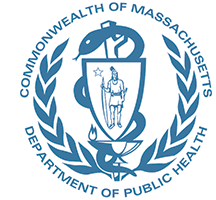
The rate of fatal opioid overdoses varied significantly by industry and occupation from 2011 to 2015, with construction workers dying from opioid overdoses at six times the average rate for all Massachusetts workers, according to a report released today by the Massachusetts Department of Public Health (DPH).
Using available death certificate data, DPH analyzed 4,302 opioid-related deaths in Massachusetts from 2011 to 2015 by industry and occupation to understand whether work, and specifically work-related injuries, might have contributed to opioid use disorders. Overall, workers employed in occupations known to have high rates of work-related injuries had higher rates of fatal opioid overdoses. In addition, workers in occupations with lower rates of paid sick leave and higher job insecurity had higher rates of opioid overdoses. Construction and extraction workers (quarrying and mining) accounted for more than 24 percent of all opioid-related deaths among the working population. This occupation group had a high death rate – 150.6 deaths per 100,000 workers – and a high number of opioid-related deaths – 1,096 – during this time period.
“These findings are significant because they identify the industries and occupations where strategies can be developed to intervene before injuries occur,” said Health and Human Services Secretary Marylou Sudders. “The Baker-Polito Administration uses data to identify the highest risk in order to develop specific services to mitigate these trends.”
Despite the small number of workers employed in the farming, fishing, and forestry occupations, these jobs also had a high opioid death rate. While there were fewer deaths among this group (61) than in the construction occupations, the rate of opioid-related deaths -143.9 per 100,000 workers – was more than five times the average rate of 25.1 per 100,000 for Massachusetts workers.
“Work-related injuries often serve as the initiation for opioid pain medication, which can subsequently lead to opioid misuse,’’ said Public Health Commissioner Monica Bharel, MD, MPH. “Ensuring that jobs are safe, that the risk of injury is low and that workers have the time for rehabilitation and are not self-medicating to keep working are all key to decreasing opioid overdose deaths among workers.”
Among the report’s other findings:
Several other occupations also had rates of opioid-related overdose deaths that were significantly higher than the average rate for all Massachusetts workers. These included:
- Material moving occupations (59.1)
- Installation, maintenance, and repair occupations (54.0)
- Transportation occupations (42.6)
- Production occupations (42.1)
- Food preparation and serving related occupations (39.5)
- Building and grounds cleaning and maintenance occupations (38.3)
- Healthcare support occupations (31.8)
Similar to findings for all opioid-related overdose deaths in Massachusetts, the majority -77.3 percent – of deaths in this study were among males.
There were several occupation groups where females had significantly elevated rates of opioid-related overdose deaths. Specifically, female workers in healthcare support occupations (30.1) and food preparation and serving-related occupations (28.9) had rates higher than the 25.1 average rate for Massachusetts workers.
In 2017, the Massachusetts Department of Industrial Accidents launched a two-year pilot program called the Opioid Alternative Treatment Pathway (OATP) as a tool to address the state’s opioid epidemic by giving attorneys, judges, and injured workers within the workers’ compensation system quicker access to medical professionals to make treatment decisions.
DPH also has taken steps to address the findings, including:
- Conducting additional research, with support from the US Centers for Disease Control and Prevention (CDC), to assess the extent to which work-related injuries serve as an initiation for opioid pain medication, leading to opioid misuse
- Working on the development and implementation of an educational outreach plan targeting high-risk worker groups
- Conducting outreach to involve stakeholders in identifying and developing intervention strategies to prevent opioid misuse among high-risk working populations
The report was created by DPH’s Occupational Health Surveillance Program (OHSP), in collaboration with the Bureau of Substance Addiction Services, Injury Surveillance Program, and Office of Special Analytic Projects, and was funded by the CDC.
Since 2015, the Baker-Polito Administration has doubled spending to address the opioid crisis and increased capacity by more than 1,200 treatment beds. In addition, the Administration is investing $219 million over five years from the federally approved 1115 Medicaid waiver to meet the needs of individuals with addictions and/or co-occurring disorders.
For more information on the Commonwealth’s response to the opioid epidemic as well as links to the latest data, visit www.mass.gov/opioidresponse. To get help for a substance use disorder, visit www.helplinema.org, or call the Massachusetts Substance Use Helpline at (800) 327-5050.












Reader Comments